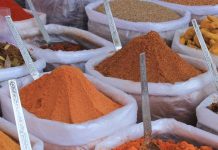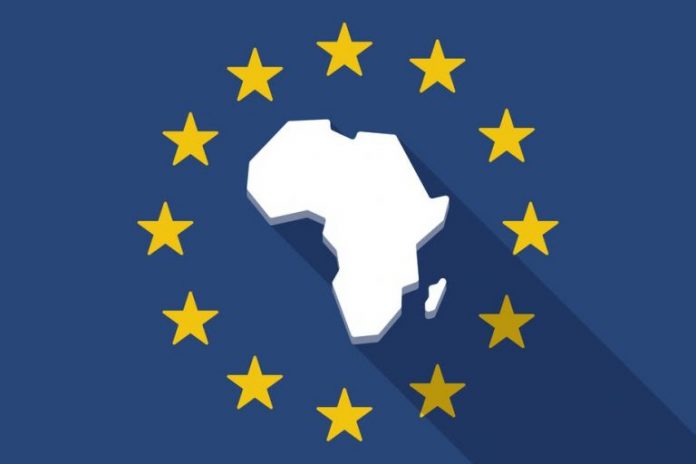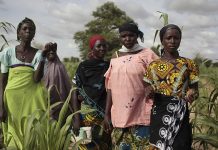The improvement and development of relations between Europe and Africa have resulted in a soaring export performance of West Africa, as well as the rest of the continent. The export numbers have tripled in the last few decades since the EU provides the immediate market opening for products from West Africa. Nonetheless, the African market has been gradually opened for the EU products over the course of 20 years. This has resulted in partially free access to its market, even though the EU offers entirely free access to the European market. However, the difference in export-import business between the two continents did not stop the development of the African trade and economy development.
As many tend to portray the African export performance as weak and ineffective, the West African exports have statistically increased over the last few decades, and they have improved drastically. The countries of West Africa have recognized the market needs of EU, hence the targeted and successful export towards the European countries, even though the intra-regional trade remains limited and not entirely taken advantage of. The notion of regional integration is essential for overall trade opportunities, and economic growth of African countries does not change the fact that the African continent is more focused on export business, rather than regional trade. This, furthermore, highlights the challenges within the African trade and economy that speaks for the semi-full access of EU to the African market.
The European Trade Plan With Africa
During 2017, the EU and Germany have decided to turn their spotlight on the trade with African countries. The European Union has constructed a plan on how to engage in the improvement and betterment of African economy and prosperity. For the same cause, the countries of Europe have decided to partake in a trading plan that would be mutually beneficial for both parties. Viewing Africa as their partner continent, the EU presented the so-called Marshall Plan that will not only contribute to the development of African nations, job and education opportunities as well the infrastructural investment, but also trade partnership between the two parties.
Having in mind the resources found in Africa, for example, oil, minerals, and metals, as well as agricultural chances, the EU decided that Africa is the continent of opportunity and trade interest. This economic partnership between Europe and Africa was sealed with this plan and is seen as a blossoming condition for African trade and economy.
African Resources That Meet The Standards Of European Countries
The involvement of Europe in the African market and economy begs the question of the benefits and advantages of such an action. It is no secret that the African resources highly contribute to the European industries, especially textile, metal and agricultural industries. So, let’s take a close look at what are Africa’s main products of trade that benefit European countries and meet high European standards.
According to the statistics of European Commission, the trade of goods in Africa is based on these commodities in need;
• fishery products,
• foodstuffs, beverages, and tobacco as well as animal products,
• minerals and metals,
• chemicals and petroleum products,
• machinery and transportation equipment,
• textile and clothing manufacture.
This short list comprises the main products European countries have imported from Africa in the years from 2013 to 2017. Alongside these products, what Africa trades with Europe the most are chemicals, fuels, and raw materials as well. The statistics provided by the European Commission also provide information on the percentage of financial and economic growth of all African countries in this period. It shows a relative-variation growth when compared to previous years and a three-times increase in export trade with the EU member states.
European countries import from Africa a variety of commodities. Taking into consideration the African region of origin of a commodity, one can easily conclude that the EU tries to ensure high-quality products by offering a chance of prosperity and economy growth for the African countries.
Regional Exports From Africa to the European countries
To tackle the question of European import of African goods, it would be most convenient to observe this notion thoroughly from a regional stance. Since each African region conducts business differently or is a part of a trade agreement, the difference in the variety and amount of goods that they export to Europe is highly visible;
• West Africa
West Africa is possibly the European Union’s most important trading partner in Africa, especially in the Sub-Saharan area, and vice versa. Following several trading agreements and plans, like the Marshall Plan, the EU makes sure it contributes to the development and prosperity of this region, while benefiting, on the other hand, from the products that are produced there. West Africa is the main exporter of commodities related to fisheries, agriculture and textile industry.
West Africa is also a leading exporter to the EU when considering fuels as well as food products. Animal products, vegetables, tobacco, and textile are mainly imported from this region, and countries like Benin, Senegal, Ghana or Guinea. Other countries, like Niger and Sierra Leone export commodities such as diamonds, uranium, and precious metals to European countries, primarily to France, Italy, and the Netherlands.
The trade agreements and economic partnership between the EU and West Africa are continuously expanding, due to the increase in demand on the European market. The trade in commodities and services cover, among those mentioned in the previous paragraphs, also transportation, travel and business services. West Africa is promoted in the EU as one of the most important investment destinations, as all of the countries of West Africa are members of the World Trade Organization.
The plans for West Africa are to increase export to the EU, stimulate investment and contribute to developing and improving productive capacity. The goal is to have a positive effect on employment and overall prosperity of the region. To ensure such progress and increase in exports to the EU, the Economic Partnership Agreement (EPA) tackles the issues regarding West Africa and the EU trade cooperation. This agreement offers an opportunity for further import-export services between the two regions in the future. The EPA will also support West Africa on a more global and international trade level, apart from the EU, which is, for now, its main trade partner.
• Northern Africa
The region of North Africa has attracted global attention in the recent years because of its renewable, solar-energy potential. The International Energy Agency has estimated that the solar energy potential alone could meet the demands of North Africa, Middle East, and Europe as well. The EU has recognized this potential and decided to establish an export-import partnership with the countries of North Africa.
Germany has had plans of importing renewable energy from Morocco, through Spain and France. Many other European countries had the same attempt. However, there is no adequate physical electrical connection between North Africa and the European countries in energy demand. For now, there is only one such connection between the two continents. Spain and Marocco are cooperating on this energy import-project that could be money-saving and beneficial for Europe, as well as for the countries of North Africa. The plan is, nevertheless, to improve the ties of Spain with the rest of Europe to take advantage of the potential of this situation, as well as to improve the electric connections of Marocco with the rest of North Africa.
• Eastern Africa
Even though Africa as a continent is not interested in the intra-regional trade, the region of Eastern Africa is. This region has finalized the negotiations for a region-to-region Economic Partnership Agreement (EPA) with the EU in 2014. During 2016, South Sudan has also decided to join the partnership agreement that comprises Burundi, Kenya, Rwanda, and Uganda. In 2017, however, Tanzania agreed to abandon the deal, which has put the whole project at risk, but the project is still ongoing.
The commitment to regional integration and homogenous trade has resulted in an increase of export and a decrease in import when it comes to commodities intended for the EU and vice versa. Commodities like coffee, tea, sugar, cotton and fish products are exported to Germany, Belgium and France primarily. The UK and the Netherlands usually import commodities like petroleum products, cement, and horticultural products as well. Tanzania’s and Burundi’s most valuable export commodity is gold, that is intended for the European market and countries like Switzerland.
• Central Africa
The region of Central Africa is the most challenging for the European import-export business. Regional trade in this area is lagging when compared to the other African regions. Nevertheless, the countries of Central Africa do manage to export their commodities to Europe quite successfully.
France is the goal country of this region’s export trade. It amounts to 66 million dollars per year as estimated according to the statistics from 2015. The main export commodity is oil, and it stands for 70% of all exports from Central Africa to the EU. The agricultural products are not as frequently exported as they are in the rest of the continent, and that is due to the oil and wood products export. Cameroon contributes 82% of the region’s exports, but recently the Central African Republic has seen an increase in export of 26.3% of all wood and machine products. Other main exports are cocoa, wood copper, bananas, and diamonds. However, only the Central African Republic does not export oil to the EU.
The EU is currently in negotiations for an Economic Partnership Agreement with the countries of Central Africa. The goal is to enable these countries to increase their export percentage, especially when it comes to Cameroon, Gabon, and Congo since these countries are rich in crude oil and petroleum products, gold and diamonds. Countries like Italy, France, and Spain are the main importers of these countries’ commodities. Nonetheless, the EU is looking into broadening the marketplace for Central Africa in the rest of Europe.
• Southern Africa
Just as Western Africa is EU’s most important trading partner in Africa, so is Southern Africa the largest trading partner of Europe. The region is a free trade area and its trade policy with the EU is ruled by the Trade, Development, and Co-operation Agreement (TDCA). This agreement has enabled a 90% of bilateral trade between the countries of Southern Africa and EU member states.
Out of all the Sub-Saharian economies, Southern Africa is the strongest and the most engaged when it comes to trade with the EU. Southern Africa’s main exports to the EU are fuels and mining products as well as machinery and transport equipment. The countries that usually import commodities from Southern Africa are Germany, Netherlands, Italy and the UK. Alongside the mentioned commodities, these countries also import gold, diamonds, platinum and other metals and minerals, and they also export to the countries of Southern Africa, cultivating an ongoing mutual trade and cooperation agreement. Botswana and South Africa are Africa’s main gold and diamond producers. Botswana’s Orapa mine is the largest diamond mine in the world when considering the value and quantity of carats that are produced every year. The EU is also looking into the wine opportunities in South Africa under the EPA. The region produces approximately 490,124 tons of wine for international export annually, and the countries of EU show increasing demand for South African wine.
How does the import of European countries affect African economy?
There are numerous ways in which the excessive European import from and export to the countries of Africa affect the continent’s overall economy and prosperity. The excessive European needs and import strategies do benefit African countries heavily. Not to mention the economic partnership agreements that enable African countries to export their commodities and products to the high-demand nations of Europe. The established trade systems and contracts are helpful for small, vulnerable economies in different African regions. They also create new opportunities and trading circumstances that did not exist before the establishment of the EU. Since the EU promotes Africa as the primary source of commodities, it also wants to broaden the marketplace outside the union and to the other European countries.
However, alongside many positive impacts of the EU import of African commodities, there is also a negative side to this notion. Some of the negative examples include the EU’s most prominent landowners taking up half of the EU budget; all done at the expense of African farmers. On the other side, there is a problem with African countries not being able to export to EU due to the EU’s export of the same, lower-cost products to Africa. Usually, products that are unwanted in Europe typically end up in the third-world or developing African countries. All of this is devastating to the African economy and usually puts African producers out of business.
The EU is trying to come up with an effective trading system that will rid the economic partnership between the EU and the countries of Africa of these negative implications. The West Africa and Southern Africa trade policies are set as an example of what both sides are, Europe and Africa, are looking to achieve in the future. This will definitely ensure the export-import business to continue to thrive. The EU is also looking into broadening the market to the non-member states of the EU so the demand for the African commodities would apply to each country in Europe.
SOURCE:WaystoCap

























